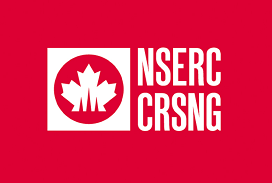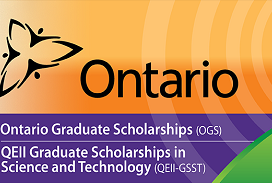MSc in Anatomy and Cell Biology, Clinical Anatomy
Since 2005, the Department of Anatomy & Cell Biology has offered the course-based MSc Anatomy and Cell Biology, Clinical Anatomy program. This internationally recognized program offers well-rounded training, combining coursework in the anatomical sciences with immersive research and teaching opportunities. Aside from an interest in anatomy, current and former students have joined our program to gain technical and professional skills that are crucial for a career in health sciences and industry and to gain experience in research and teaching.
Coursework & Milestones
Students in the Clinical Anatomy program have the opportunity to participate in a variety of courses and milestones throughout the 20-month period. Some of the academic disciplines include anatomical sciences, teaching and learning, professionalism, and research.
Courses
ANATCELL 9560 – Human Anatomy and Embryology
A study of human anatomy and embryology through cadaveric dissection and tutorials.
ANATCELL 9561 – Clinical Mammalian Histology
A detailed study of the cellular and microscopic structure of the various tissues and organ
systems of the body, with an emphasis on humans and other mammals used in medical research.
ANATCELL 9565A – Introduction to Teaching and Learning in Anatomy
Provides students with a variety of real-world experiences that are required of proficient university educators.
ANATCELL 9566 – Clinical Anatomy Seminar
Students build professional skillsets through tutorials and journal club.
ANATCELL 9569B – Clinical Neuroanatomy
A study of the structure and function of the human nervous system through tutorials and cadaveric dissection.
ANATCELL 9567 (Summer) – Cross-sectional & Spatial Anatomy for Radiology
Students will work in collaboration to develop their skills and knowledge related to cross-sectional anatomy.
Milestones
MSc Seminar Attendance
Student must attend regular Department seminars and PhD Public Lectures.
Teaching Practicum in Clinical Anatomy
Complete the Teaching Certificate run by the CTL office, and deliver a didactic lecture in an Undergraduate course.
Surgery Observation
Attend at least one half-day surgery observation.
Prosection
Complete a detailed dissection of a region assigned by the program director or other ACB faculty member.
Students will match with a supervisor to complete a research project. Students must conduct a thorough literature review and refine their study Hypothesis (if relevant), Objectives, and Methodology. Finally, students must present their research at a local, regional, or international conference.
Teaching Opportunities
Graduate students in the MSc Anatomy and Cell Biology, Clinical Anatomy program will develop a teaching skillset for post-secondary education in the anatomical sciences. Our students are provided with several opportunities to serve as a teaching assistant (TA) for Undergraduate, Graduate, and professional student courses. Furthermore, students will create and deliver a lecture in one of the Anatomy and Cell Biology Undergraduate courses during their second year.
Research Projects
While not a traditional research-based MSc., our program provides students with an opportunity to participate in novel research; this component of the program spans the entire 20 months. Students are matched with supervisors in the Department of Anatomy and Cell Biology that are pursuing bench research projects in cell or neurobiology, cadaveric-based research, or projects that involve the scholarship of teaching and learning. Through their research, many of our students earn the opportunity to attend academic conferences and publish their findings. Below are links to manuscripts published by former students that demonstrate the breadth of topics available.
NOTE: Student-supervisor matching occurs after the program begins. Students do not need to find a supervisor prior to admission into the program.
Anatomy
Groh AMR, Lamont J, de Oliveira C, Fanous J, Rajakumar N, Power NE, Beveridge TS. (2021). Characterizing the autonomic neural connections between the abdominal aortic and superior hypogastric plexuses: A multimodal neuroanatomical study. Autonomic Neuroscience:Basic & Clinical, 232: 102785
Lanting BA, Legault JA, Johnson MI, MacDonald SJ, Beveridge TS. (2020). Lateral subvastus approach: A cadaveric examination of its potential for total knee arthroplasty. The Knee, 27:1271-1278.
Draghici D, Barr K, Hardy DB, Allman BL, Willmore KE (2021). Effects of advanced maternal age and acute prenatal alcohol exposure on mouse offspring growth and craniofacial phenotype. Alcoholism: Clinical and Experimental Research. 45:1383-1397.
Woitowich MLA, Yeung C, Doherty C, Binhammer PA, Beveridge TS (2021). Comparing Flap Advancement and Wound Coverage Provided by Prominent Anterograde Homodigital Neurovascular Island Flap Designs: A Cadaveric Model. Journal of Hand Surgery.
Power A, Parekh A, Beveridge T, Groh A, Moore LJ (2021). Zone III REBOA and the COBRA-OS™: Safety of Inadvertent Iliac Artery Device Deployment. Journal of Endovascular Resuscitation and Trauma Management. 5(2): 83-87.
Marshall K, Nair SM, Willmore KE, Power NE (co-senior), Beveridge TS (2020). Anatomical characterization of the inguinal lymph nodes using microcomputed tomography to inform radical inguinal lymph node dissections in penile cancer. Journal of Surgical Oncology. 1-6.
Cell Biology & Neurobiology
Patel SV, DeCarlo CM, Book SA, Schormans AL, Whitehead SN, Allman BL, Hayes SH. (2022). Noise exposure in early adulthood causes age-dependent and brain region-specific impairments in cognitive function. Frontiers in Neuroscience, 16: 1001686, . doi: 10.3389/fnins.2022.1001686
Roberts H, Woodman AG, Baines KJ, Jeyarajah M, Bourque SL, Renaud SJ. (2021). Maternal iron deficiency alters trophoblast differentiation and placental development in rat pregnancy. Endocrinology, 162: https://doi.org/10.1210/endocr/bqab215
Moore AC, Wu J, Jewlal E, Barr K, Laird DW, Willmore KE. (2020). Effects of reduced connexin43 function on mandibular morphology and osteogenesis in mutant mouse models of oculodentodigital dysplasia. Calcified Tissue International, 107:611-624.
Roberts H, Bourque SL, Renaud SJ. (2020). Materna iron homeostasis : effect on placental development and function. Reproduction, 160:R65-R78.
Scholarship of Teaching & Learning
Horne A, Yuen JJ, Beveridge TS, McLean TS. (2022). Grade-focused interactions in higher education: has the pursuit for good grades replaced learning? Advances in Physiology Education, 46:752-762.
Bazos E, Attardi SM, Baytor J, Wilson TD (2020). Clinical anatomy and unexpected careers: is there a curriculum for that? Anatomical Sciences Education, 14:460-470.
Finances
As a course-based MSc. program, students are not provided with a stipend. However, students will receive a teaching assistantship with a minimum of 140 hours each year of the program. Additionally, students are encouraged to apply for scholarships to provide funding for their second year in the program.
The department of Anatomy and Cell Biology Financial Support Explained
For further information on financial support











